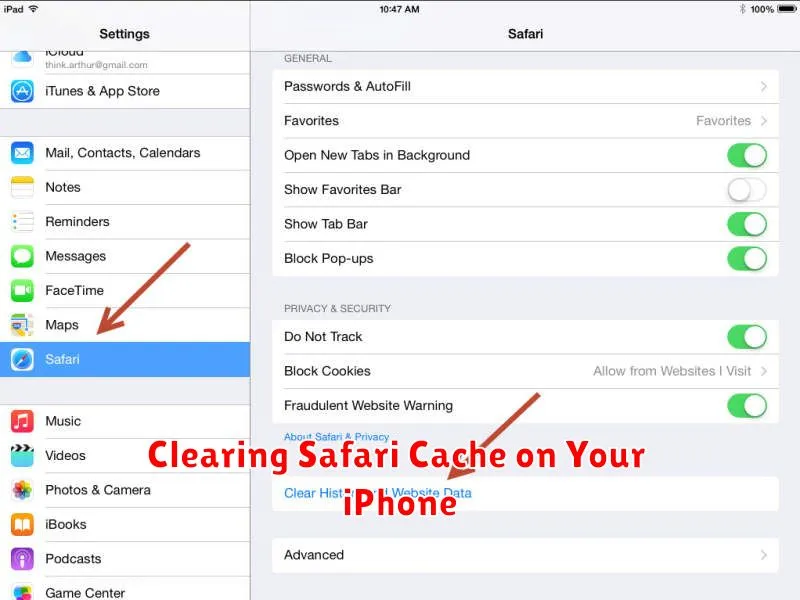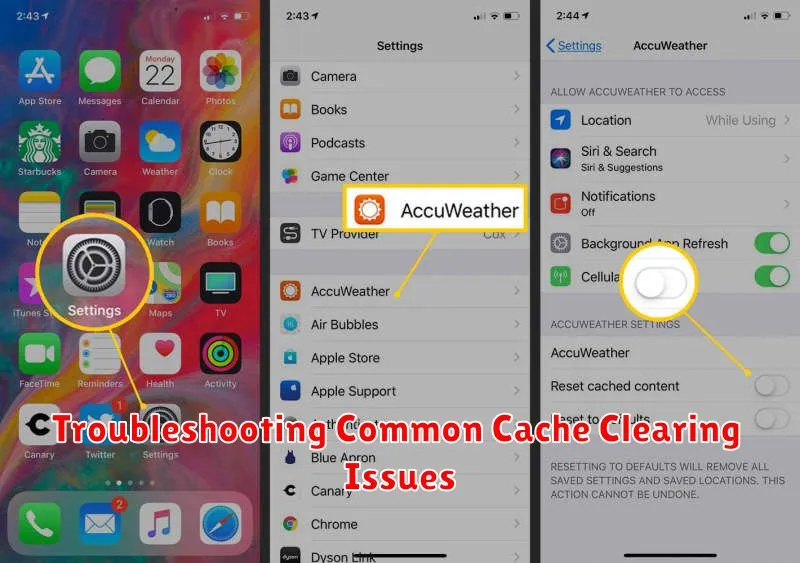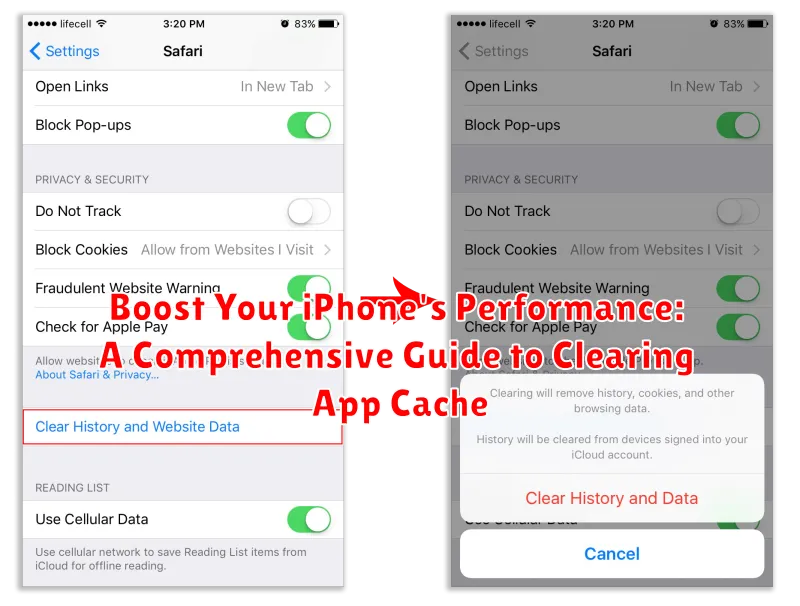Is your iPhone feeling sluggish? Are apps taking longer to load than they used to? A cluttered app cache could be the culprit. This comprehensive guide will show you how to clear app cache on your iPhone, leading to a noticeable performance boost. Learn how to reclaim valuable storage space and enjoy a smoother, faster iPhone experience. We’ll cover various methods, from simple in-app clearing to more advanced techniques for a truly optimized device. Whether you’re experiencing lag, slowdowns, or simply want to maintain peak performance, this guide is essential for every iPhone user.
Maximizing your iPhone’s performance is crucial for a seamless user experience. This guide will delve into the specifics of clearing app cache, explaining why it’s important and how it contributes to a faster and more responsive device. We’ll address common performance issues caused by a full cache, such as app crashes, freezing, and reduced battery life. By the end of this guide, you’ll have the knowledge and tools to boost your iPhone’s performance and keep it running smoothly for years to come.
What is App Cache and How Does it Affect Your iPhone?
App cache is temporary data stored on your iPhone by applications to speed up loading times and improve performance. This data can include images, files, and other bits of information that an app frequently accesses. Think of it like a shortcut – instead of retrieving data from the internet every time, the app can quickly grab it from the local cache.
While app cache is designed to improve your experience, over time it can accumulate and begin to have the opposite effect. A large cache can consume valuable storage space on your iPhone, potentially leading to slowed performance, app crashes, and other issues.
When an app’s cached data becomes corrupted or outdated, it can also cause the app to malfunction. Clearing the cache forces the app to download fresh data, which can often resolve these problems. Managing your app cache is an important aspect of maintaining your iPhone’s overall health and performance.
Why Clearing App Cache is Important
Clearing your iPhone’s app cache is a crucial maintenance step that contributes significantly to maintaining its optimal performance. Over time, cached data can accumulate, taking up valuable storage space and potentially slowing down your device.
A bloated cache can lead to sluggish app loading times, increased battery drain, and even app crashes. By regularly clearing the cache, you essentially give your iPhone a refresh, allowing apps to run smoothly and efficiently.
Furthermore, clearing the cache can resolve issues stemming from corrupted data, which may manifest as glitches or unexpected app behavior. This simple action can prevent more significant problems from developing, ensuring a consistently positive user experience.
Signs Your iPhone Needs Cache Clearing
A sluggish iPhone can be frustrating. While several factors can contribute to decreased performance, a full app cache is often a major culprit. Recognizing the signs can help you address the issue promptly.
Slow app loading times are one of the most noticeable indicators. If apps take significantly longer than usual to open or respond, it’s a strong sign your iPhone needs a cache cleaning.
App crashes or freezes can also point to excessive cached data. If apps frequently crash or become unresponsive, clearing the cache might resolve the problem.
Reduced storage space is another tell-tale sign. While cache files are generally small individually, they can accumulate and consume a substantial amount of storage over time. If you’re constantly battling low storage warnings, clearing app caches can help free up valuable space.
Finally, outdated app content can be a symptom of a full cache. If an app isn’t displaying the most recent information, clearing the cache can often rectify the issue.
How to Clear App Cache on iPhones: Step-by-Step Instructions
Unfortunately, there’s no single button to clear all app caches on an iPhone. Cache clearing is primarily managed within individual apps. Many apps don’t even offer a manual cache-clearing feature. Instead, they rely on the system to manage storage. However, some apps do provide this functionality.
Clearing Cache Within Apps
Check app settings: Open the app you wish to clear the cache for. Look for settings or options labeled “Storage,” “Cache,” or “Clear Data.” The specific wording varies between apps. If you find such an option, follow the in-app prompts to clear cached data.
The Offload App Method (iOS 11 and Later)
Offloading an app deletes the app itself but retains its documents and data. This can be a good way to reclaim space and often forces a cache reset when you reinstall the app.
- Go to Settings > General > iPhone Storage.
- Select the app you wish to offload.
- Tap “Offload App” and confirm.
- Reinstall the app from the App Store.
Note: If an app’s performance issues persist even after offloading, contact the app developer for support. They may offer specific troubleshooting steps or identify an underlying issue within the app itself.
Clearing Safari Cache on Your iPhone

Safari, like other apps, stores cache data on your iPhone. This includes browsing history, website data, and cookies. While designed to speed up browsing, a bloated Safari cache can sometimes hinder performance. Clearing it can resolve issues like slow loading times or unexpected website behavior.
To clear your Safari cache, follow these steps:
- Open the Settings app on your iPhone.
- Scroll down and tap on Safari.
- Scroll down again and tap Clear History and Website Data.
- Confirm your choice in the popup window by tapping Clear History and Data.
This process removes your browsing history, cookies, and other website data. Note that this action applies to all devices signed in to your iCloud account if Safari syncing is enabled.
Tips for Managing App Data on Your iPhone
Managing app data effectively can significantly improve your iPhone’s performance and storage capacity. Here are some helpful tips:
Regularly Review App Usage
Identify and delete apps you no longer use. These apps can still accumulate data and consume valuable storage space. Check your iPhone’s storage settings to see which apps are taking up the most space.
Offload Unused Apps
Offloading apps removes the app itself but preserves its documents and data. This allows you to reinstall the app later and quickly restore your previous information. This is a great option for apps you use infrequently but don’t want to lose associated data.
Manage App Permissions
Control which apps have access to your location, photos, microphone, and other data. Limiting unnecessary permissions can not only improve privacy but also reduce the amount of data apps store on your device.
Utilize Cloud Storage
Services like iCloud can help manage data for apps that support it. Consider storing photos, videos, and other large files in the cloud to free up space on your device.
Troubleshooting Common Cache Clearing Issues

While clearing app cache is generally a straightforward process, you might encounter some occasional hiccups. This section addresses common issues and their solutions.
Cache Still Seems Full After Clearing
If you’ve followed the steps to clear cache, but your storage still indicates high usage, the issue may not be cached data, but rather downloaded files or other app data. Check your iPhone storage breakdown to identify what’s consuming the most space. Consider deleting unnecessary files, photos, or videos.
App Functionality Issues After Clearing Cache
While rare, clearing cache might lead to minor app functionality issues. This could be due to corrupted cached data that the app relied on. Try restarting the app or your iPhone. If the issue persists, reinstalling the app might be necessary.
Unable to Clear Cache for Certain Apps
Some apps don’t allow direct cache clearing within the app or iOS settings. Consult the app’s documentation or support resources for specific instructions. If no official clearing method exists, offloading or reinstalling the app is the next course of action.
How Often Should You Clear Your iPhone’s Cache?
There’s no single magic number for how often you should clear your iPhone’s cache. The frequency depends on your usage and how quickly your apps accumulate data. A general guideline is to clear cache from frequently used apps every one to two months. For less frequently used apps, clearing every three to six months might suffice.
However, pay attention to your iPhone’s performance. If you notice sluggishness, unexpected app crashes, or reduced storage space, it’s a good sign to clear the cache, regardless of the timeframe. Proactively clearing the cache can prevent these issues from arising.
Consider these factors:
- Heavy app usage: If you use data-intensive apps like social media or streaming services daily, you might need to clear the cache more often.
- Storage capacity: iPhones with less storage might benefit from more frequent cache clearing.
- Performance issues: Address performance problems by clearing the cache of suspected apps or Safari.
Finding the right balance is key. Too frequent clearing can be unnecessary, while neglecting it can lead to performance degradation. Monitor your iPhone’s behavior and adjust your cache-clearing schedule accordingly.

